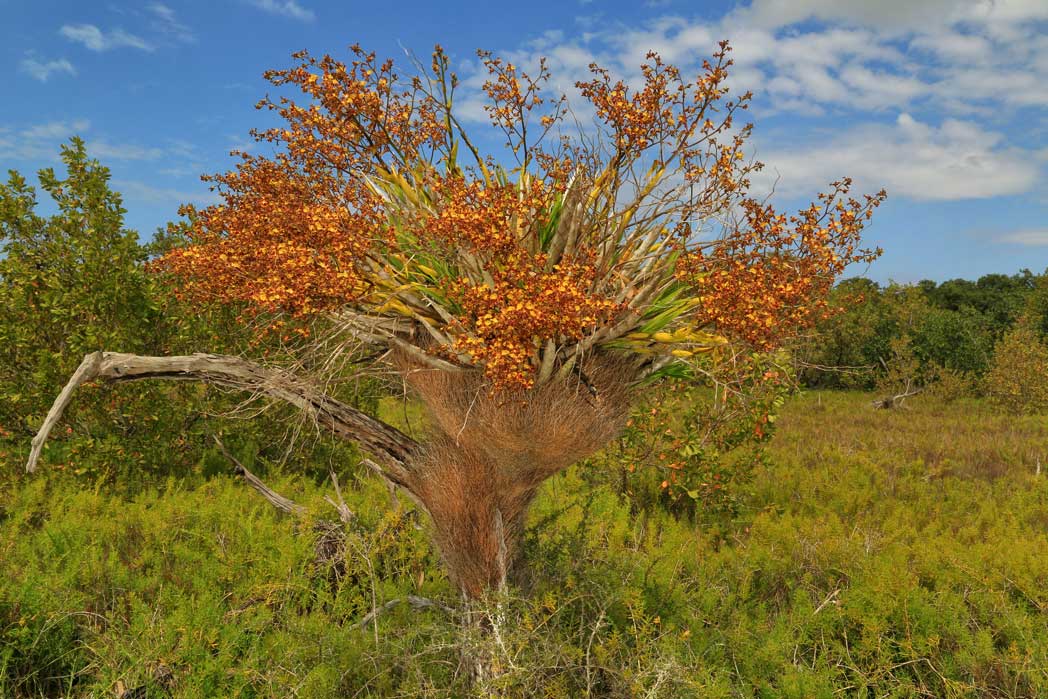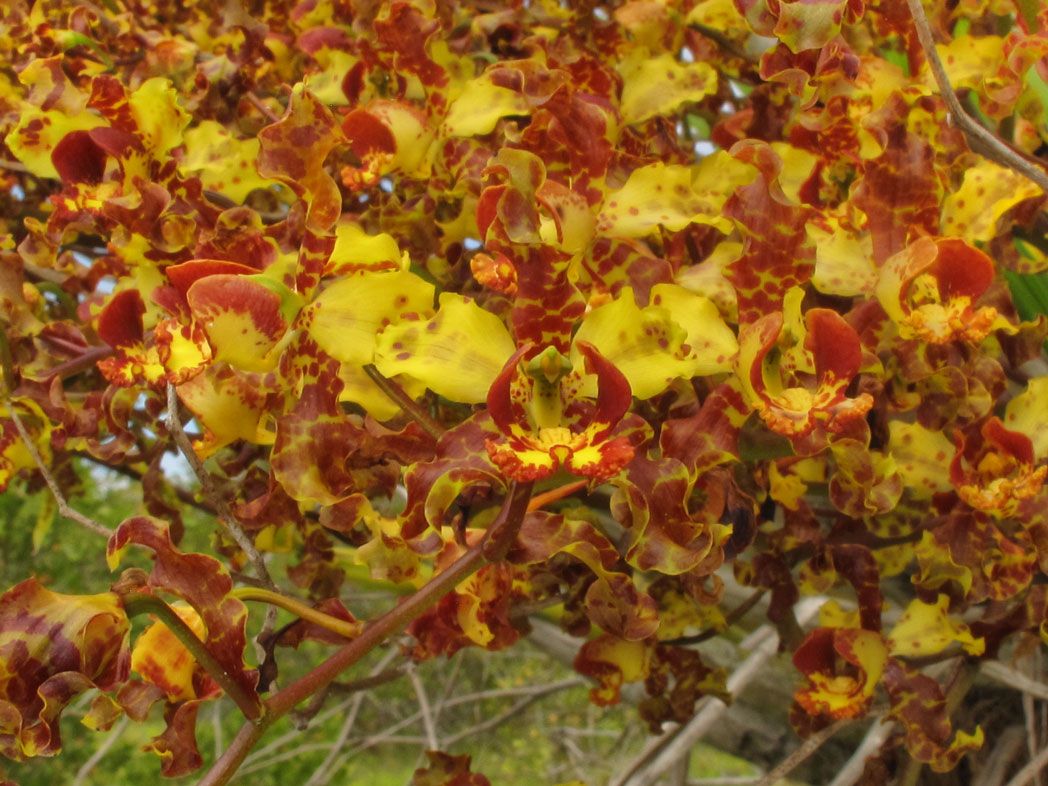Cowhorn orchid
Pictured above: Cowhorn orchid (Cyrtopodium punctatum) taken at Everglades National Park by Alan Cressler, Lady Bird Johnson Wildflower Center. Click on terms for botanical definitions. View post as a PDF
Cowhorn orchid is a stunning epiphytic wildflower that occurs in swamps and coastal uplands in South Florida. It typically grows on Cypress (Taxodium spp.) and Buttonwood (Conocarpus erectus) trees. Florida’s once-abundant population was largely depleted in the early 20th century due to overcollection and habitat destruction. It is now a state-listed endangered species. The plant blooms in late winter through spring, with peak blooming in May.
Cowhorn orchid flowers employ a reproductive system of deceit pollination, whereby the flower emits a sweet fragrance to attract pollinators, particularly Carpenter (Xylocopa spp.) and Bumble (Bombus spp.) bees, but provides no nectar reward. The flowers are especially fragrant in the early afternoon and attract many bees at once, giving the plant another common name: Bee-swarm orchid.

Cowhorn orchid (Cyrtopodium punctatum) in full bloom. Photo taken at Everglades National Park by Alan Cressler, Lady Bird Johnson Wildflower Center
The plant’s extremely ornate flowers have bright yellow petals with dark red to purplish spots and a red to reddish-brown upward-curving tri-lobed labellum with yellow-orange markings. Sepals are gold with reddish-purple spots and are heavily curled. Flowers are born in multi-branched panicles that may be up to 3 feet long. Each inflorescence may produce 30 or more flowers. Leaves are long (up to 2½ feet) and lance-shaped with parallel venation. They are alternately arranged. Older leaves dry out and break on the midvein, leaving a sharp thorn-like appendage. Pseudobulbs are thick and may be 1–2 feet long. As the age, they become wrapped in papery sheaths that resemble cigar wrappers, leading to yet another common name: Cigar orchid. The plants’ aerial roots attach to trees to hold the orchid in place. Its minuscule seeds are born in large (3½ inches long and up to 2 inches wide) green capsules that tend to nod.
Cyrtopodium punctatum was previously classified as Epidendrum punctatum.
Family: Orchidaceae (Orchid family)
Native range: Lee, Collier, Miami-Dade and Monroe counties
To see where natural populations of Cowhorn orchid have been vouchered, visit florida.plantatlas.usf.edu.
Hardiness: Zones 10–11
Lifespan: Deciduous perennial
Soil: Moist, well-drained leaf litter
Exposure: Minimal shade to full sun
Growth habit: Plant masses may be 2–5’ wide
Propagation: Seed, division
Note: Although occasionally grown by enthusiasts, Cowhorn orchids are not commercially available and may not be harvested or sold without a permit.

